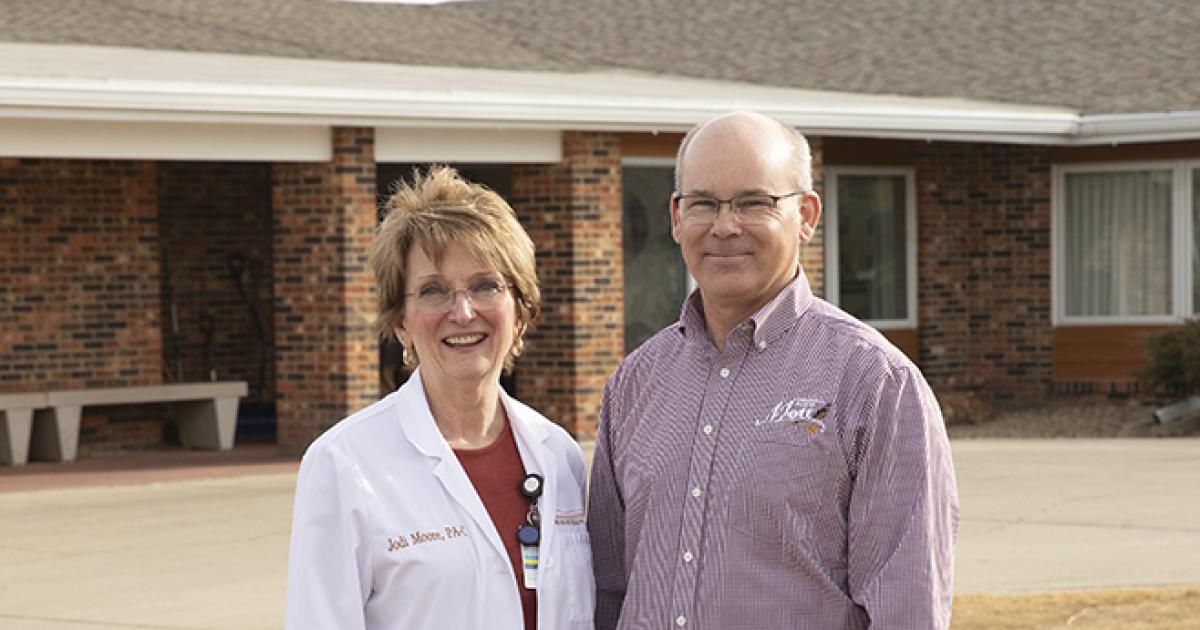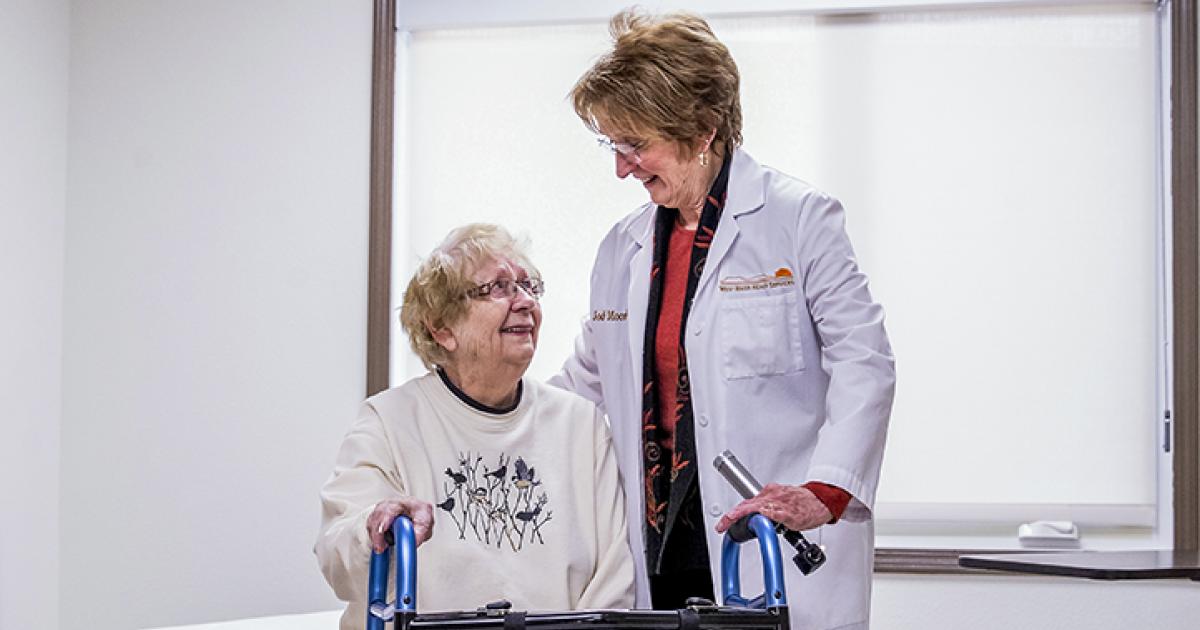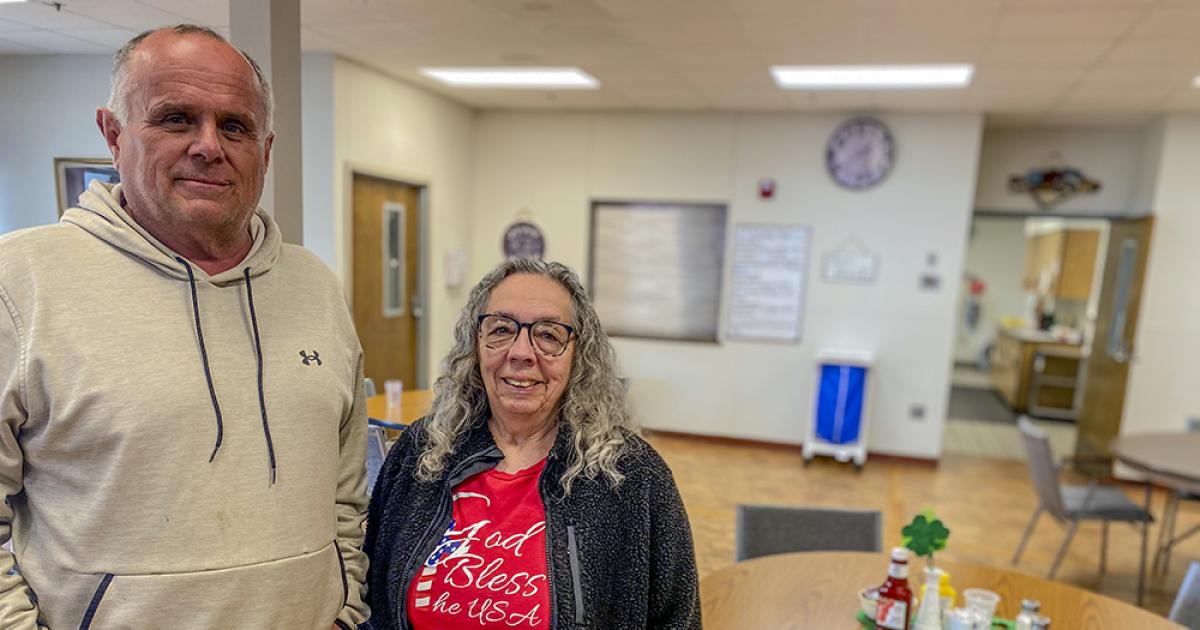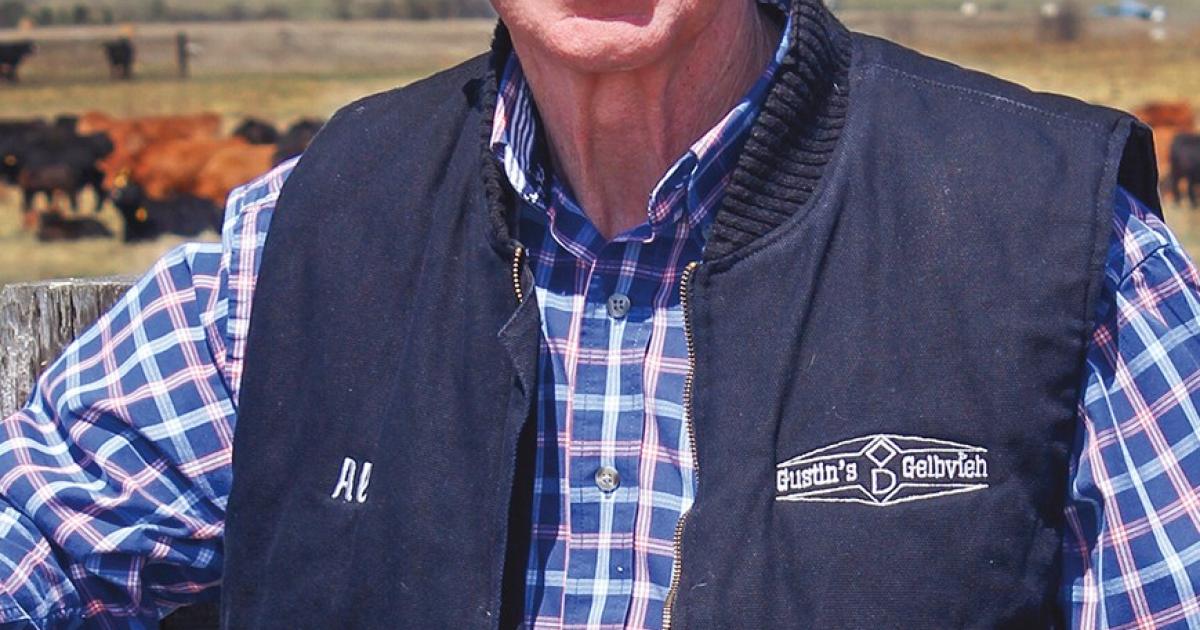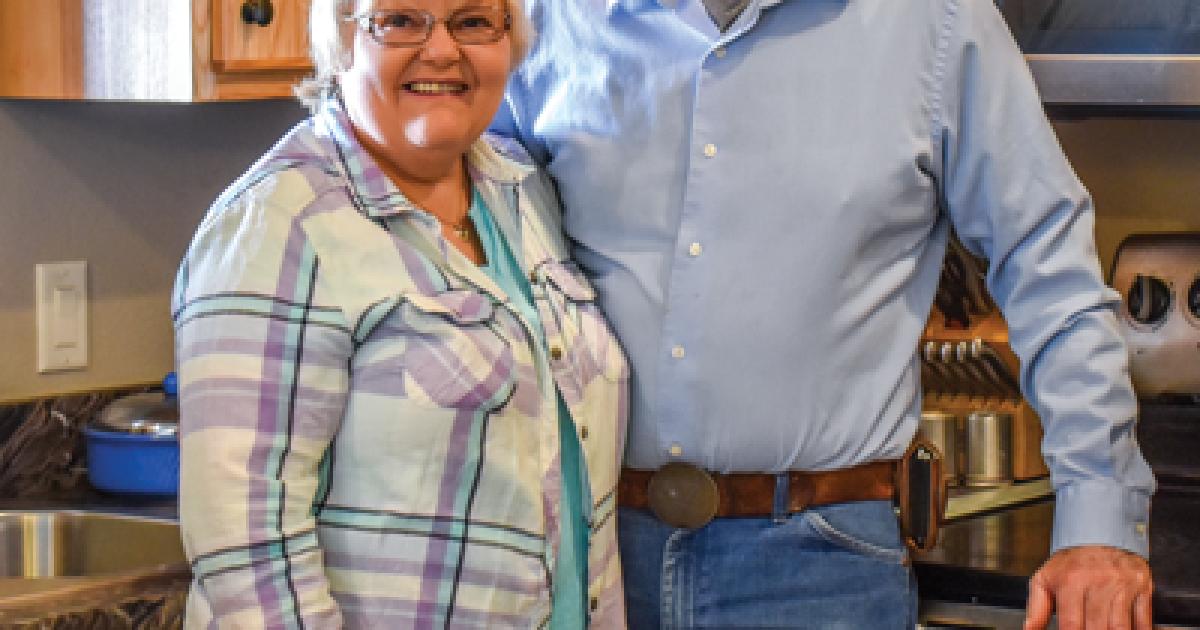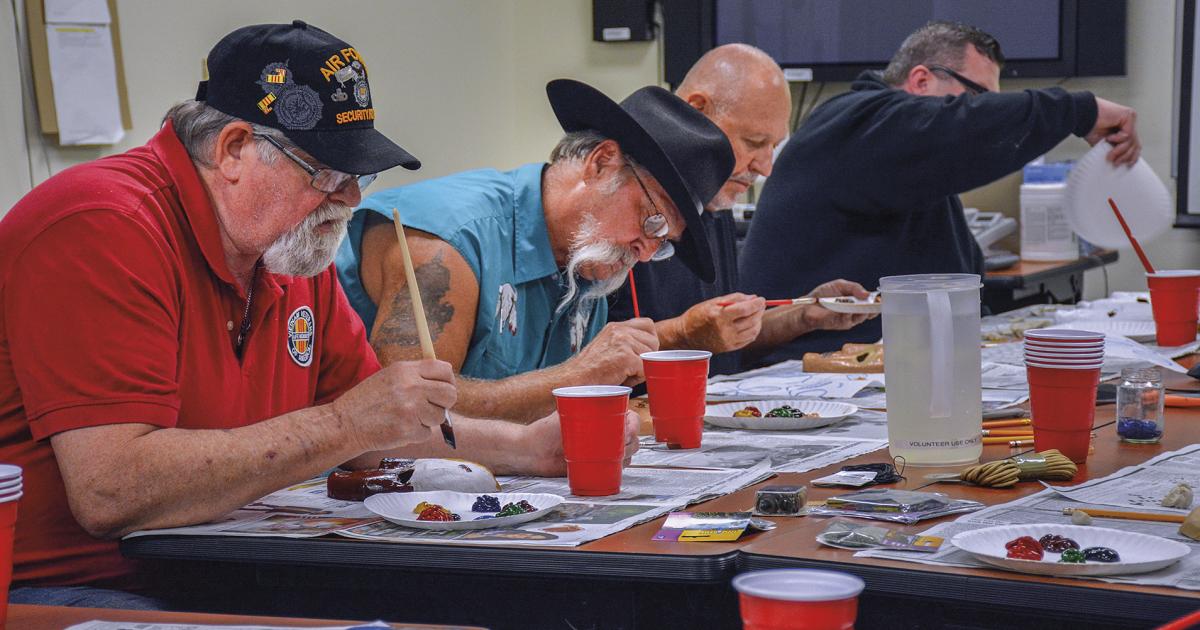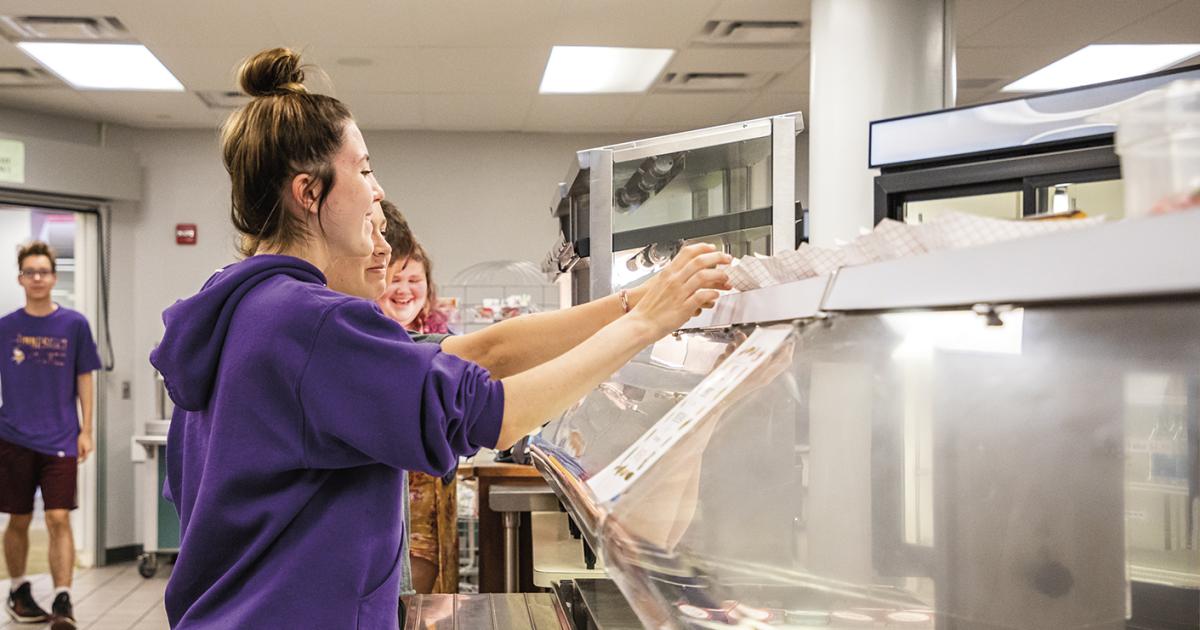Small town saves health services
Residents gather for coffee and laughter at the Mott Health Care Center.
Like a warm hug, laughter echos through the dining room as a group of ladies gathers for coffee, gleefully cajoling cookies from the kitchen staff inside the Mott Health Care Center (MHCC).
The scene is the culmination of a mighty community effort.
“Perseverance is never giving up and never losing hope” was once scripted onto a wall of the physical therapy room in the center. That seems appropriate.
It’s been a long and winding road since the city took possession of the former Good Samaritan Society-Mott building July 15, 2022, after that skilled care nursing home was closed, and the building was gifted to the city of Mott.
The building sat empty for a year as the community prepared to reopen it as a basic care center on Jan. 2, 2024.
They scrubbed floors on their hands and knees, rang phones across North Dakota for assistance, washed windows and fluffed the pillows. Among those called, the North Dakota Association of Rural Electric Cooperatives (NDAREC) helped acquire $200,000 in grant funding to reach the overall goal.
Today, a new clinic welcomes patients in one wing and 19 residents call the MHCC home.
“We did not want to see another business close in our community,” says Mayor Troy Mosbrucker, who serves on the MHCC board of directors.
Earthquake news
The announcement the Good Samaritan Society-Mott would be closed in July 2022 shocked the community of Mott.
“It was hard to see something that had always been a staple in the community to have gone away,” says Charlotte Aldinger, an MHCC board member whose grandmother was once administrator of the facility.
Built in 1975, the facility had 31 residents and employed 42 staff when it closed. The Good Samaritan Society had operated in Mott since 1957 and joined with Sanford Health in 2019.
With the announcement of the closure, the community entered crisis mode, and volunteers immediately stepped forward.
“People got on board right away,” Mosbrucker says. “The question was, ‘What’s going to happen to the building?’”
Initially, the community was notified the building would be sold with the stipulation it couldn’t be used for rendering health care services of any kind moving forward. During a meeting, the Good Samaritan Society offered to gift the building to the city and remove the restriction on future use. That decision came following a more than 30-minute phone call with the governor and Sanford Health CEO.
Soon, Mosbrucker held the keys to the building and a vision to bring the jobs and residents back home.
“The first goal was health care,” Mosbrucker says.
What now?
A steering committee formed and community meetings were held, sharing feasibility studies and gathering public input on how to move forward.
“Our goal was to keep the community informed, not just go do it,” Mosbrucker says.
An early feasibility study revealed restarting a skilled care nursing home in Mott could potentially require a $3 million community investment and 35 employees.
“It probably confirmed what our suspicions were to begin with, that skilled care was going to be a challenge to make that work. That was more of a confirmation,” board member Dean Wehri says.
The eight-member board, which includes expertise from bankers, the mayor, retired business owners and a state senator, then considered basic care.
Basic care is for those who can no longer live by themselves because of impaired capacity for independent living and who require health, social or personal care services, but do not need regular 24-hour medical or nursing care services.
“When we created that small board, we were drinking through a fire hose with ‘What are the state’s requirements?’ and ‘How are we going to fund this?’ And it was pretty crazy,” Aldinger says.
Rural North Dakota became a resource, as they called other facilities, banking peers and state resources for help.
“People were just giving us names left and right to try to find someone to figure it out,” Aldinger says. “‘North Dakota nice’ is just, it’s huge.”
“There was a certain percentage of the community that was almost giving up hope without fully knowing how hard we really were pushing and researching to really get to the next step,” Aldinger says.
MHCC President Linda Lindemann was at the center on a Friday afternoon when they got the text the basic care license had been approved.
“I went running to tell somebody and I could hear them screaming, because they had already gotten it on their phone, too,” Lindemann says.
When the care center opened last year, one lone resident was rambling inside. Soon, there were three. The closure of a nursing home in Dickinson brought 10 transferred residents, and now there are 19. The 22-bed care center has 20 single rooms and one double room. And 24 staff work as universal employees.
The center is fully licensed as a basic care center and a nonprofit entity overseen by the board of directors who initially had the vision. The city has retained ownership of the building.
“For me, it was the vision of the board. We were all on the same page, and that enthusiasm and determination and effort that everybody put forth to make this happen probably was one of the biggest highs,” says Jodi Moore, a physician assistant at West River Health Services Mott Clinic and the MHCC administrator. “One of the challenges was trying to help everybody in the community see the same vision that we saw.”
“It’s just nice to drive by and see a parking lot full of cars,” says Mosbrucker, whose wife has worked there as a nurse for 38 years. “It puts a smile on your face when you drive by.”
“It’s a big accomplishment for the city to do this,” Mosbrucker says.
Just ask
Opening the MHCC wasn’t the effort of just eight people.
“We had tremendous volunteers to clean it up. They spent weeks here,” Mosbrucker says.
“I called in a lot of favors,” Lindemann says with a laugh.
“We had just a fantastic group,” she says. “We had so many people that volunteered, that walked in the door and said, ‘What do you need help with?’”
Volunteers cleaned everything from the wooden beams on the ceiling to the ovens in the kitchen. One woman used a toothbrush to scrub the corners. Another volunteer even restained hundreds of worn handles on every closet, cupboard and dresser in every room. Mott-Regent High School students helped with various aspects during classtime, too.
“The community volunteer support was amazing. You asked and somebody did it,” Moore says.
The community donated financially as well. A $208,616 endowment fund came with the building, and approximately $550,000 in donations assisted with initial opening costs.
“It gave us the momentum and the courage to move forward, because when you looked at the feasibility study, we knew we needed $500,000 in the kitty to start. … It was crucial to have that set up to give us the momentum to move forward,” Wehri says.
A pie fundraiser was just one example of the community support.
“People got out their checkbooks and paid a ridiculous amount for one pie, but it was awesome,” Lindemann says.
Consolidated Telcom installed a new phone system and rewired all the wings for internet, phone and cable TV, all of which amounted to a $30,000 in-kind donation of labor. And the city of Mott pledged $100,000 over five years.
Bed licenses, which can cost from $5,000 to $10,000 a bed to purchase, were also donated. CHI St. Alexius donated 19 and West River Health Services donated three.
The center has also become a community hub, serving Elder Care senior meals three days a week, with the kitchen staff serving up to 800 meals a month for residents and community members. Bridge players gather, a book club meets and other activities invite community members inside.
The third wing
Filling a wing with a clinic was another piece of the puzzle.
The vision was to renovate one wing of the center to lease to West River Health Services, Hettinger, to operate its Mott Clinic, with the remaining two wings utilized as the basic care facility.
“I think having the two together, that’s the combination of health care that we wanted from the beginning,” Wehri says. “Having a clinic was the first hub of it.”
The new clinic, which opened in late 2024, is 3,800 square feet, about three times the size of the former clinic, which was located in a 1955 retrofitted house in Mott. The new clinic features additional exam rooms, a dedicated behavioral health space, modern X-ray room, larger medical lab and improved air-handling system to reduce infection risks.
The city of Mott received a nearly $1.2 million grant to renovate the north wing of the center to accommodate the clinic. The grant is through the N.D. Community Development Block Grant CARES Act Funds administered by the N.D. Department of Commerce Division of Community Services.
“What helped make this go was the grant for the clinic,” Mosbrucker says. “It was a big part of it. If we wouldn’t have gotten the grant for the clinic, I don’t think this would have been here.”
“To get enough residents for three wings was a big ask, too,” Lindemann says.
“The community can feel the difference in the clinic,” Aldinger says. “It is beautiful, and we needed it.”
“It’s a huge reminder to all of us that we are southwestern North Dakota and we’re not dying. We’re thriving right now, so I think it’s been really good,” Aldinger says.
“It’s been a journey. It’s not been without its challenges, but the community of Mott has really risen to the occasion,” Moore shares.
“When you see the smile on their faces and how much they enjoy it, that’s when you know you’ve accomplished something,” Mosbrucker says.
___
Luann Dart is a freelance writer and editor who lives in the Elgin area.
CO-OP COMMITMENT TO COMMUNITY
During an outreach visit with Roughrider and Slope electric cooperatives last fall, the North Dakota Association of Rural Electric Cooperatives (NDAREC) Rural Development Center learned about a $200,000 funding gap for the $2.2 million Mott Health Care Center’s (MHCC) clinic renovation.
Recognizing the project as a strong candidate for a donor-supported grant program NDAREC helps administer, NDAREC’s rural development team assisted MHCC in preparing and pitching a grant application to the anonymous donor organization.
This donor considers applications from cooperatives and other public or nonprofit entities to assist in the development of rural North Dakota. Since 2016, NDAREC’s collaboration with this grant program has helped secure nearly $2.6 million for 41 rural projects. Connecting rural communities with funding opportunities like these underscores the cooperative commitment to improving quality of life across North Dakota.
“We were able to share the story and the need,” says NDAREC Rural Development Director Ellen Huber. “A big part of what we do is connecting the people who are championing these projects in their communities with different types of resources. Some of that can be the hands-on technical assistance on more complex projects where more help is needed, but quite often it’s simply connecting to funding sources.”



